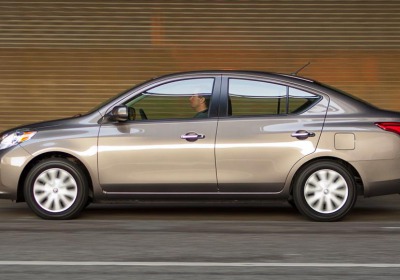Nissan to build $2 billion plant in Mexico
Wed, 25 Jan 2012
Nissan Motor Co. will build a $2 billion auto assembly plant in Mexico, its third in that country, as it works to outgun rival Honda Motor Co.
The plant, in Aguascalientes, Mexico, will have initial capacity to build 175,000 light vehicles annually for the United States, Mexico and Latin America, with plans to expand. Production is scheduled to begin by the end of next year.
Nissan did not specify what model will be produced at the plant initially, but one company executive described it as "an existing B-segment nameplate that is currently in short supply." That description suggests the subcompact Versa, which already is built at an existing Nissan plant in Aguascalientes and sold in the United States and other markets.
Models will be added as capacity is increased at the new plant. Nissan's other Mexican plant is in Cuernavaca. A redesigned Versa sedan was launched last fall and has been exceeding sales expectations.
But Nissan--which enjoyed a 15 percent increase in U.S. sales and grabbed 8.2 percent of the U.S. market in 2011--has bigger ambitions.
It hopes to capture 10 percent of the U.S. market; outsell the Honda brand for the first time; move more vehicle production out of Japan to North America; and become the dominant Japanese automaker in Latin America.
To do all that, it needs more factory space.
Nissan produced 1.18 million light vehicles in North America last year, up 16 percent from 2010 and enough to edge the output of rivals Honda and Toyota.
Wednesday's announcement represents an aggressive step forward by Nissan. Big auto assembly plants routinely cost about $1 billion--Nissan is planning to spend twice that much in Aguascalientes, and to spend it fast.
According to the timetable, Nissan will move from groundbreaking to commercial production by the end of 2013--or less than 23 months.
Nissan is beginning to strain under its existing U.S. plants. Just four years ago its two factories in Smyrna, Tenn., and Canton, Miss., were underused and Nissan was reducing U.S. head count.
That situation is now reversed: The Mississippi plant is now building the Altima model on three shifts, and the company has been hiring hundreds of workers in Smyrna to keep pace with rising output. The Smyrna site is also adding three new models; the all-electric Leaf, the Rogue crossover and the new Infiniti JX crossover.
Nissan is also maxed out on the capacity of its two large assembly plants in Mexico, says Bill Krueger, vice chairman of Nissan Americas.
Adding urgency to the situation, Nissan CEO Carlos Ghosn has virtually blackballed any idea of shipping more Japanese-made vehicles to the United States because of the strong Japanese yen. According to Ghosn, the yen has simply made Japanese-built vehicles uncompetitive outside of Japan.
So Nissan and other Japanese automakers are scrambling as they have not done since the 1980s to shift output outside of Japan to North American and other regions.
Honda and Mazda Motor Corp. also are building assembling plants in Mexico.
Nissan officials are calling their new Aguascalientes plant "Phase 1," and readily indicate that its output will increase. Nissan's longer range plan is to put more models into production there, possibly including a vehicle that Nissan will share with Germany's Daimler AG at a later date.
Nissan and Daimler announced in early January that they will share a four-cylinder engine that Nissan will begin producing at its engine plant in Decherd, Tenn. But those engines are for other vehicles.
The Mexico project includes plans for a large supplier park that will serve both the new and existing Aguascalientes plants, which will separated by a 10-minute drive.
Nissan has not indicated where it will obtain the engines to support the additional vehicle production in Aguascalientes. But it is unlikely to import engines from Japan because of the strong yen.
Whatever it does, Nissan wants to move quickly, seizing on the unexpected U.S. market success it enjoyed in 2011.
While Nissan's bigger rivals Honda and Toyota struggled to bounce back from the March 2011 Japanese earthquake and tsunami, which crippled output, Nissan had more ample vehicle inventories and posted higher U.S. sales for the year.
Nissan closed the sales gap with the rival Honda brand in the process. Its Nissan and Infiniti models trailed Honda/Acura by more than 320,000 sales in 2010; last year, the gap was less than 105,000.
Along the way, Nissan North America’s share of U.S. sales rose 0.4 points to 8.2 percent. American Honda’s share dropped 1.6 points to 9 percent.
By Lindsay Chappell- Automotive News

